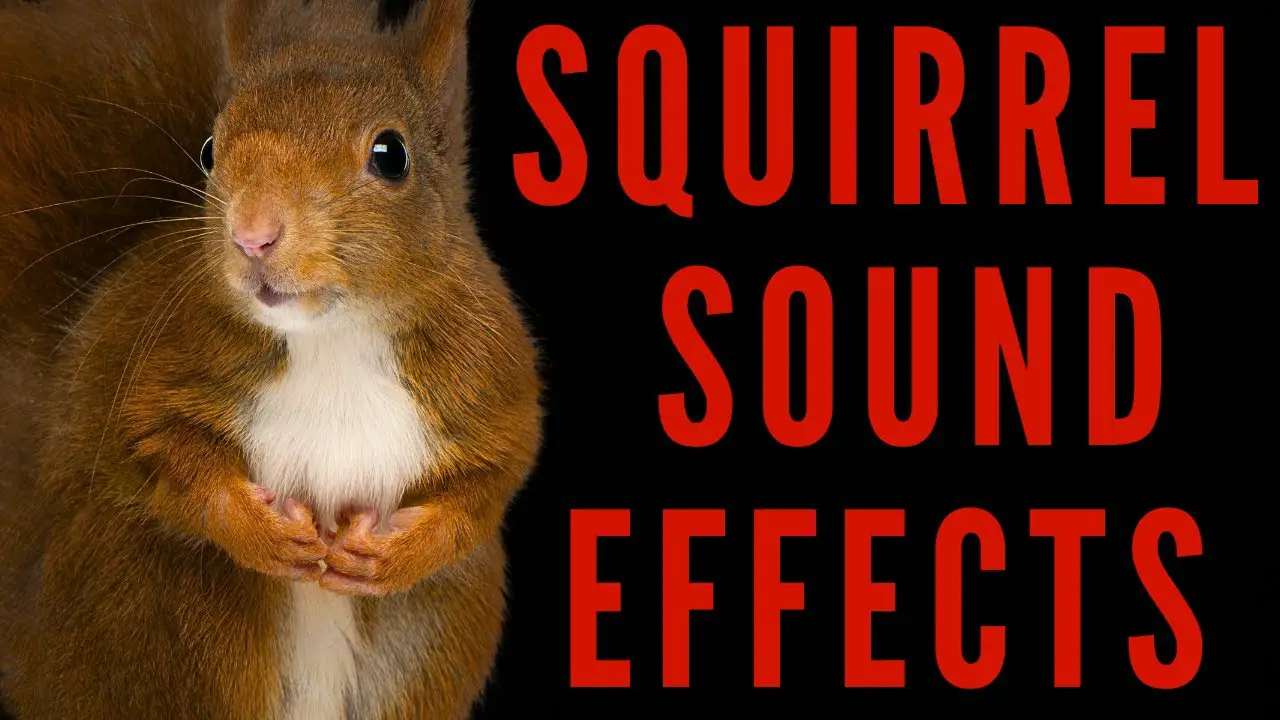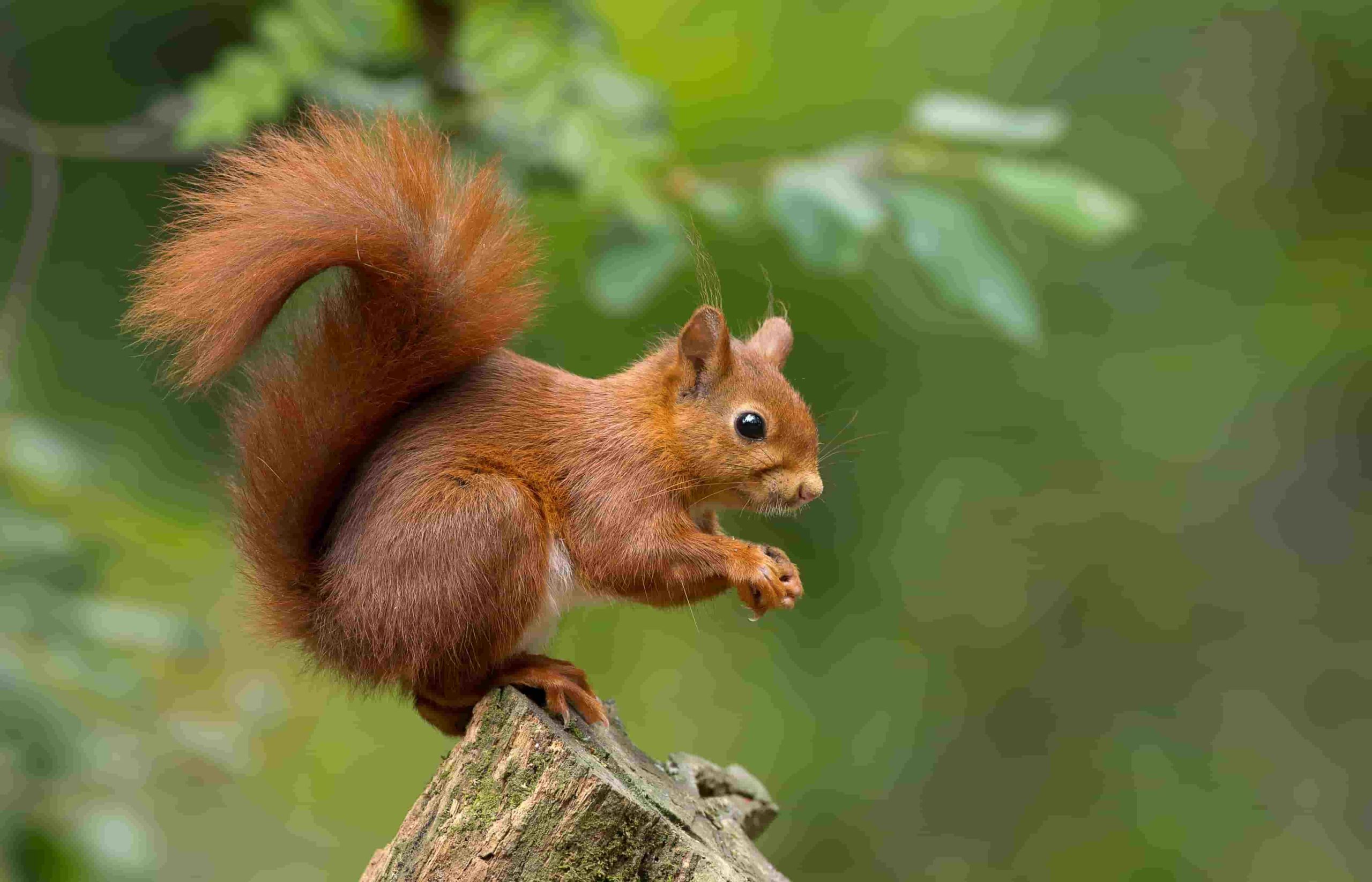
Squirrels make a variety of sounds, including chattering, squeaking, and barking. These noises communicate with other squirrels.
Squirrels are fascinating creatures often seen scurrying about in parks and backyards. Their vocalizations serve multiple purposes, such as warning others of predators or establishing territory. They use a combination of sounds to convey different messages. Chattering and squeaking are common when they sense danger or feel threatened.
Barking noises can indicate an attempt to ward off intruders. Understanding these sounds helps in observing and appreciating the behavior of these agile animals. Their vocal repertoire is surprisingly complex for such small creatures, making them an interesting subject for both casual observers and wildlife enthusiasts.

Credit: www.reddit.com
Introduction To Squirrel Sounds
Squirrels are fascinating creatures. They make a range of sounds. Understanding these noises helps us know their behavior. Squirrel sounds can be strange and interesting. Let’s dive into what these sounds mean.
Common Myths
There are many myths about squirrel sounds. Some think squirrels only chirp. Others believe squirrels are silent. Both are wrong. Squirrels make various sounds for different reasons. They can chirp, bark, and even purr.
Why They Make Noise
Squirrels make noise to communicate. They warn others of danger. They call out to mates. They also use sounds to show dominance. Each noise has a purpose.
| Sound | Purpose |
|---|---|
| Chirp | To alert of predators |
| Bark | To show territory |
| Purr | To communicate with babies |
- Chirping: This is a warning sound.
- Barking: Squirrels bark to mark territory.
- Purring: Mothers purr to their babies.

Credit: www.youtube.com
Types Of Squirrel Sounds
Squirrels are known for their varied vocalizations. These sounds help them communicate. Each type of noise serves a different purpose. Let’s explore the different sounds squirrels make.
Chirping
Squirrels often make chirping sounds. These can be heard during the day. Chirping is usually a sign of excitement. They chirp to alert others of danger. It sounds like a bird’s chirp but louder.
Here are some key points about chirping:
- Used to warn of predators
- Indicates excitement or stress
- Can be heard over long distances
Squeaking
Squeaking is another common squirrel sound. This noise is often softer than chirping. Squirrels squeak when they are scared. They also squeak during fights with other squirrels.
Some important facts about squeaking:
- Occurs during fights or fear
- Softer and less frequent than chirping
- Used to communicate distress
Alarm Calls
Squirrels are small but mighty when it comes to communication. One of their most fascinating behaviors is their alarm calls. These calls are crucial for their survival. They alert others of danger, like predators or threats.
Purpose
The main purpose of a squirrel’s alarm call is to warn other squirrels. This helps them escape from predators quickly. Alarm calls can also signal the type of predator. For example, a different call is used for ground predators versus aerial threats.
Examples
Here are some common examples of squirrel alarm calls:
- Barking: This is a short, sharp sound. It warns of ground predators like cats or dogs.
- Quaa: This is a longer, more drawn-out sound. It often signals aerial threats like hawks.
- Seet: This is a high-pitched, faint sound. Squirrels use it to warn of immediate danger when a predator is very close.
Each type of call serves a unique purpose. Squirrels know which sound means what. Understanding these calls can help you observe squirrel behavior better.
Mating Calls
Squirrels are known for their unique and varied sounds. One of the most interesting sounds they make are mating calls. These calls help squirrels find a mate and communicate their intentions. Understanding these calls can help in identifying squirrel behavior.
Characteristics
Mating calls are distinct and vary by species. They are often characterized by high-pitched chirps and rapid sequences. These sounds can be loud and persistent. Male squirrels usually make these calls to attract females. Female squirrels may respond with their own calls.
- High-Pitched Chirps: These are usually short and repetitive.
- Rapid Sequences: Multiple calls in quick succession.
- Persistent: Calls can last for several minutes.
When To Hear Them
Mating calls are most common during the breeding season. The breeding season varies by species and region. Generally, you can hear these calls in early spring and late summer. The calls are usually heard during the daytime.
| Time of Year | Frequency |
|---|---|
| Early Spring | High |
| Late Summer | High |
Listen for these calls in wooded areas or places with many trees. Squirrels are more active during the day, so daytime is the best time to hear them.
Communication With Offspring
Squirrels are fascinating creatures, especially in how they communicate with their young. Their communication methods are diverse, involving various sounds and gestures.
Mother-infant Interactions
Mother squirrels are very attentive to their babies. They use distinct sounds to interact with their infants. These sounds help in nurturing and guiding the young ones. The mother often makes soft, murmuring noises to keep the babies calm.
Squirrels also use body language to communicate. The mother might nudge her babies or use her tail to signal them. This combination of sound and movement ensures the infants understand their mother’s messages.
Nurturing Sounds
The nurturing sounds are crucial for the survival of baby squirrels. These sounds include soft chattering and gentle squeaks. Such sounds help in bonding and keeping the babies close to the mother.
- Soft Chattering: This sound reassures the babies.
- Gentle Squeaks: These are used when the mother calls her young.
- Murmuring Noises: These keep the babies calm and secure.
Squirrels also produce a low purring sound. This sound is comforting and helps in creating a safe environment for the babies. The variety of sounds ensures effective communication between the mother and her offspring.
Understanding these sounds provides insight into the complex world of squirrel communication. It highlights the importance of sound in nurturing and protecting their young.
Territorial Signals
Squirrels are known for their diverse range of sounds. These sounds serve various purposes, including territorial signals. Understanding these signals can help us learn more about their behavior.
Defensive Noises
Squirrels make specific sounds to defend their territory. They produce a sharp, loud sound called a quaa. This noise warns other squirrels to stay away. Another common defensive noise is the kuk-kuk sound. This is a rapid, chattering noise. It indicates that the squirrel feels threatened.
Here’s a brief overview of the defensive noises:
| Noise | Description |
|---|---|
| Quaa | Sharp, loud sound to warn others. |
| Kuk-kuk | Rapid chattering when feeling threatened. |
Boundary Marking
Squirrels also use sounds to mark their territory. They make a muk-muk noise, which is softer and more repetitive. This sound is often used during mating season. It signals to other squirrels that the area is occupied. The muk-muk noise helps maintain social order among squirrels.
Here are the key aspects of boundary marking sounds:
- Muk-muk: Soft and repetitive noise.
- Used during mating season.
- Signals occupied territory.
By understanding these territorial signals, we can better appreciate squirrel behavior. Each sound has a specific purpose and meaning.
Differences Among Species
Squirrels make different noises based on their species. Each species has unique sounds. These sounds help them communicate with their group. Let’s explore the differences among species.
Tree Squirrels
Tree squirrels live in trees and have a variety of sounds. They often make sharp, high-pitched warning calls. These calls alert other squirrels about danger. They also produce chattering sounds when they feel threatened.
- Barking: A short, sharp sound to signal danger.
- Chattering: Rapid sounds made during conflicts.
- Quaa: A longer, more complex call to alert others.
Ground Squirrels
Ground squirrels stay mostly on the ground and have distinct sounds. They emit a series of chirps and whistles. These sounds are used to warn about predators.
| Sound | Description |
|---|---|
| Chirps | Short, repetitive sounds to signal danger. |
| Whistles | Loud, clear sounds to alert the group. |
Both tree and ground squirrels use these sounds to stay safe. Their noises are vital for their survival.

Credit: www.pesticon.com
Interpreting Squirrel Sounds
Understanding squirrel sounds can be quite fascinating. Squirrels make different noises for various reasons. These sounds can indicate their emotions and intentions. By interpreting these sounds, you can learn more about their behavior and how they interact with their environment.
Behavioral Context
Squirrels use sounds to communicate different behaviors. Here is a list of common squirrel sounds and their meanings:
- Chirping: Squirrels chirp to warn others of danger. This sound is sharp and repetitive.
- Muk-muk: This is a soft sound made by male squirrels. They use it during mating season to call females.
- Quaa: A long, sharp call used by squirrels to signal a predator is near.
- Moan: A low moaning sound indicates discomfort or distress.
Each of these sounds has a specific purpose. Recognizing these sounds helps understand their behavior better.
Human Interaction
Squirrels also make sounds when interacting with humans. These sounds can vary based on the situation:
| Sound | Situation |
|---|---|
| Barking | Squirrels bark when they feel threatened by humans. |
| Chattering | They chatter their teeth when trying to scare off people. |
| Whining | This sound can mean they are seeking food or attention. |
Understanding these sounds can help improve human-squirrel interactions. It also aids in knowing how to respond to them appropriately.
Frequently Asked Questions
What Sound Does A Squirrel Make?
Squirrels make a variety of sounds, including chattering, barking, and squeaking. These noises can indicate different emotions or alerts.
Why Do Squirrels Make Noise?
Squirrels make noise to communicate with each other. They may warn of predators, attract mates, or express emotions.
Do Squirrels Make Sounds At Night?
Squirrels are diurnal, so they are mostly quiet at night. Most of their sounds occur during the day.
How Can I Identify A Squirrel’s Sound?
Squirrel sounds are high-pitched and rapid. Common noises include chattering and a series of quick barks.
Conclusion
Squirrels communicate with various sounds like chattering, barking, and squeaking. Recognizing these noises can enhance your wildlife experiences. Next time you hear unusual sounds, you might be listening to a squirrel. Understanding their vocalizations brings us closer to nature. Stay curious and keep exploring the fascinating world of squirrels.
Learn More About Grilling
If you want to learn more about grilling, check out these other helpful resources!





